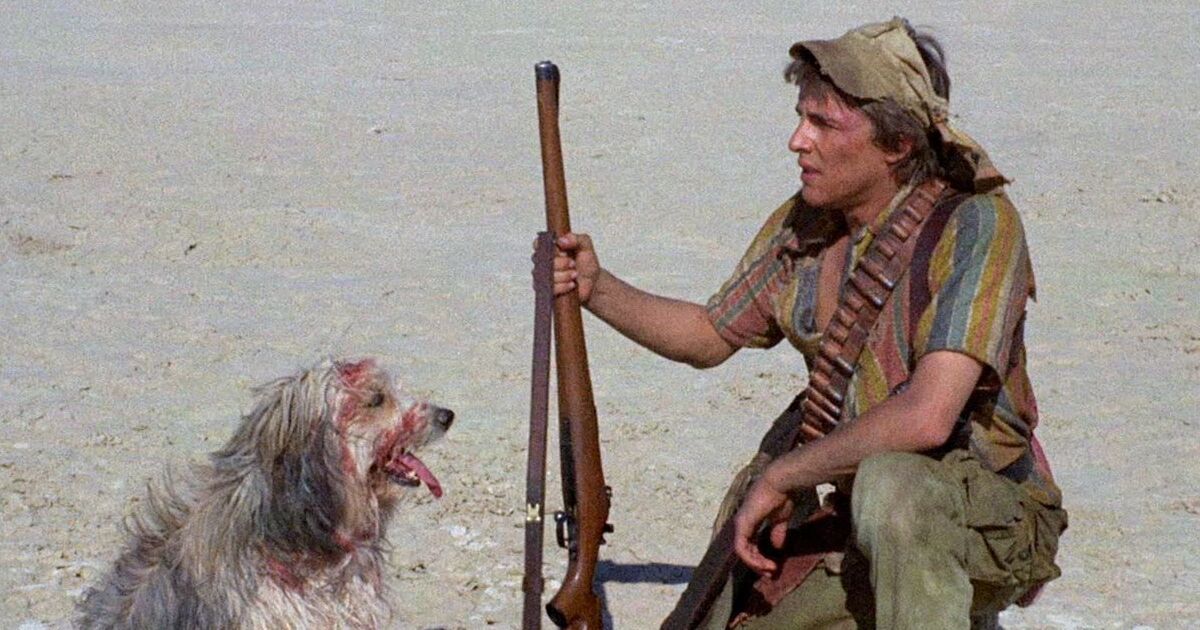In the realm of cinema, films often serve as both a mirror and a lens, reflecting the complexities of human experience while also offering a narrative framework through which audiences can explore poignant themes. One such film, “A Boy and His Dog,” presents a curious juxtaposition: is this a heartwarming tale of companionship, or does it veer into the territory of animal cruelty cloaked in fiction? This question not only invites deep contemplation but also poses a formidable challenge to viewers who must navigate their emotional responses to the portrayal of the relationship between a boy and his canine companion, set against a dystopian backdrop.
At its core, “A Boy and His Dog” is a post-apocalyptic narrative that revolves around a young boy named Vic and his dog, Blood. Their bond, depicted as both affectionate and codependent, raises compelling inquiries regarding the ethics of animal-human relationships in dire circumstances. In an era where societal structures have crumbled, the film presents a profoundly isolated environment, forcing characters to make harrowing choices in order to survive. The audience is drawn into a world where love and loyalty are intertwined with desperation and survival.
Artistic expression frequently utilizes the companionship between humans and animals to explore broader themes of humanity. However, the film’s overt reliance on Blood’s loyalty often tiptoes on the brink of ethical disquiet. The depiction of Blood as not merely a pet but a vital partner in Vic’s quest for survival calls into question the degree to which animal agency is honored within the narrative. Does the film romanticize the sacrifices made, or does it inadvertently condone a reality where animals are seen as tools rather than sentient beings?
This brings us to the crux of the discussion: the implications of animal representation in media. In a dystopian world, traditional roles are radically redefined. Vic’s manipulative interactions with Blood may echo the darker facets of human nature, illustrating how desperation can lead to the exploitation of the vulnerable. As viewers witness the emotional and sometimes physical toll that these interactions take on Blood, we are compelled to ponder an uncomfortable challenge: can one truly celebrate a bond forged in adversity while simultaneously acknowledging the potential for cruelty inherent in such dynamics?
In examining this cinematic portrayal, it becomes paramount to consider the historical context in which “A Boy and His Dog” was created. Released in the 1970s, a time marked by cultural upheaval and evolving social values, the film encapsulated anxieties surrounding the future of humanity. However, it also reflected a period when animal welfare was not yet receiving the urgent advocacy it commands today. Thus, while some may argue that Vic’s relationship with Blood serves as a poignant statement on loyalty and survival, it simultaneously invites critiques grounded in modern ethical standards regarding the treatment of animals.
This juxtaposition of loyalty and cruelty necessitates an in-depth exploration of the narrative dynamics at play. The portrayal of Blood often oscillates between a source of comic relief and an emotive symbol of loyalty. Yet, the darker scenes challenge that notion, revealing moments where Vic’s need for survival supersedes his duty of care towards Blood. As bloodthirsty predators loom on the horizon, the viewer is confronted with the uncomfortable reality that the values they hold dear may also enable acts of cruelty against an innocent creature. This duality evokes a cognitive dissonance, forcing audiences to grapple with the implications of such portrayals.
Further consideration must also be given to the relationship through a psychological lens. The attachment theory posits that early interactions significantly shape future relationships. Vic’s upbringing in a dystopian world postulates that his bond with Blood might reflect a warped extension of human connections, where love is distorted by necessity. Here lies another layer of complexity: does the film inadvertently normalize the notion that love can emerge from relational violence? And therein lies the conflict—a cherished companionship may also harbor undertones of coercion.
Moreover, the discussion surrounding “A Boy and His Dog” transcends the film itself; it delves into a broader discourse on how society portrays animals and their interactions with humans. While many narratives strive to depict harmony and mutual respect, storytelling often falls prey to sensationalism, overshadowing the ethical implications intertwined with animal representation. As proponents of animal rights, it becomes imperative to question the status quo: what narratives do we propagate and, more importantly, what experiences do they validate or invalidate?
Ultimately, “A Boy and His Dog” unfurls as a complex narrative tapestry interwoven with themes of loyalty, survival, and ethical quandaries surrounding human-animal relationships. As viewers, we are invited to revel in their companionship, yet we are also beckoned to challenge the normalization of exploitation. The film stands as a testament to the haunting question of whether we can embrace narratives that, while seemingly heartwarming, may also inadvertently perpetuate notions of cruelty. It is through this lens of inquiry that we can foster a deeper understanding and commitment to ensuring the welfare of all sentient beings, challenging art to reflect our highest ethical standards rather than our basest instincts.










